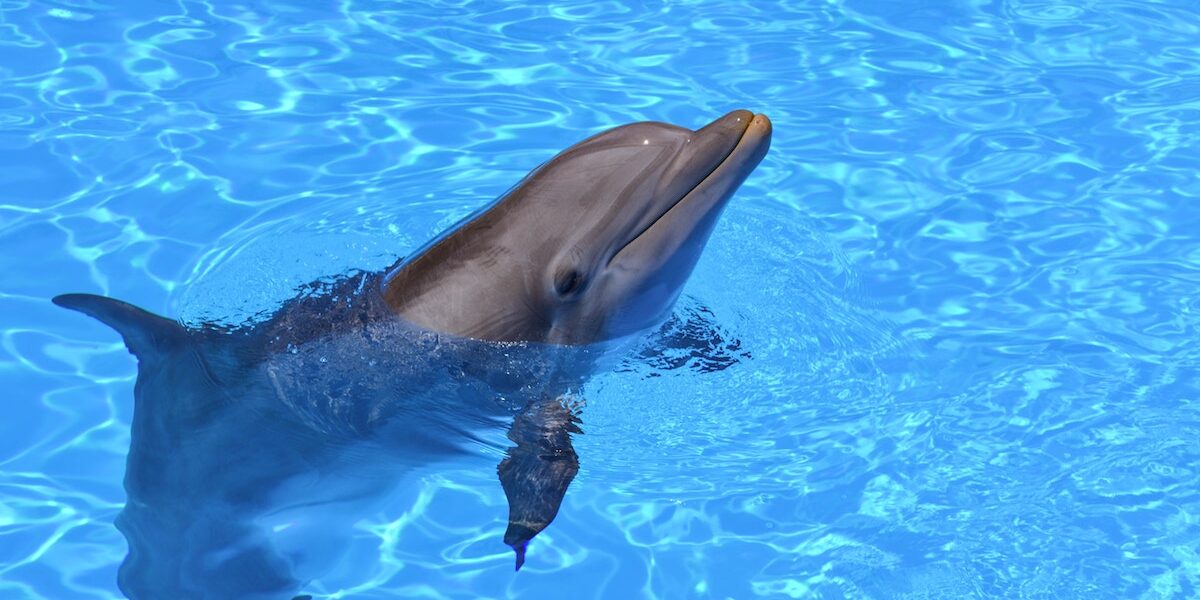By: Jacob Zadik, Communications Intern, The Ocean Foundation
Marine mammals represent some of the most interesting and remarkable creatures on the face of this earth. Though not vast in their number of species compared to other clades of animals, they are the front-runners in many extreme and exaggerated characteristics. The blue whale is the largest animal to have ever lived on earth. The sperm whale has the largest brain size of any animal. The bottlenose dolphin has the longest recorded memory, ousting the previous memory champ the elephant. These are only some examples.
Of course, because of these characteristics, cognitive abilities, and endothermic connection to us, marine mammals have always been on the pinnacle of our conservation quest. Laws passed in 1934 to ban the hunting of right whales marks the first legislation against hunting whales and some of the first conservation legislation ever. As the years progressed, increasing opposition to whaling and the bludgeoning and killing of other marine mammals lead to the Marine Mammal Protection Act (MMPA) in 1972. This law was a huge component and precursor to passing the Endangered Species Act in 1973, which has seen huge successes over the years. And, in 1994, the MMPA was amended substantially to better address more modern issues surrounding marine mammals. Overall it is the goals of these laws are to ensure species populations do not fall below their optimum sustainable population level.
Such legislation has seen remarkable successes over the years and the majority of marine mammals studied indicate an increasing population trend. This is more than can be said for many other groups of animals, and this sparks the question of why do we continue to care so much about these great creatures in a conservation sense? Personally, being a herpetologist at heart, this has always been a bit of a quandary for me. For every endangered mammal somebody would mention, I could respond with 10 endangered amphibians or reptiles. The same response could be said for fish, corals, arthropods, and plants that are on the brink of extinction. So again, the question is why marine mammals? There is no other group of animals that has such prominent legislation specifically designed to protect their populations.
The answer is that marine mammals as a collective group are perhaps some of the greatest indicators of the health of marine ecosystems. They are generally a top predator or apex predator in their environments. They also are known to play the role of a substantial food source for larger predators or smaller benthic scavengers when they die. They make residence in a wide array of habitats, from the polar seas to the tropical reefs. Thus, their health is a direct representation of the effectiveness of our conservation efforts. On the contrary, they are also a representation of the degradation cause by our increased development, pollution, and fisheries efforts. For example, the decline of the manatee is an indication of the costal sea grass habitat depletion. Consider population status of marine mammal species an assemblage of grades on a marine conservation report card if you will.
As mentioned above, a high percentage of the marine mammals researched indicate an increasing and sustainable population. Unfortunately there is a problem with this, and many of you may have already been able to pick up on the problem from my careful choice of wording. Sadly, over 2/3rds of the marine mammal species are insufficiently studied, and their current populations are completely unknown (if you don’t believe me, go through the IUCN Red List). This is huge problem because 1) without knowing their population, and its fluctuations, they fail as an adequate report card, and 2) because the increasing population trend of the studied marine mammals are a direct result of research efforts translating into better conservation management.
It is imperative that immediate efforts are taken to address the lack of knowledge surrounding the vast majority of marine mammals. Though not exactly a “marine” mammal (considering it lived in a fresh water environment), the recent story of the Yangtze River Dolphin is a disheartening example of when research efforts were too late. Declared extinct in 2006, the dolphin’s population was relatively unknown prior to 1986, and extreme efforts to restore the population were unseen before the 90s. With the unstoppable development of China in much of the dolphin’s range, these conservation efforts were too late. Though a sad story, it shall not be in vein; it shows us the importance of the urgent understanding all marine mammal populations.
Perhaps today’s greatest threat to many marine mammal populations is the ever growing fisheries industry – the gillnet fishery being the most detrimental. Marine observer programs (an excellent right out of college job) accumulate important bycatch data. From the year 1990 to 2011 it has been determined that at least 82% of Odontoceti species, or toothed whales (orcas, beaked whales, dolphins, and others), have been predisposed to the gillnet fishery. Efforts from fisheries to continue to grow and the assumed result can only be that marine mammal bycatch follows this increasing trend. It should be easy to see how a better understanding of marine mammal migration patters and mating behaviors could influence better fisheries management.
So I end with this: whether you are fascinated by the gargantuan baleen whales, or more intrigued by the mating behaviors of barnacles, the health of a marine ecosystem is demonstrated by the radiance of marine mammals. It is an expansive field of study, and much necessary research is left to learn. Yet, such efforts can only be efficiently conducted with the full support of the global community.







